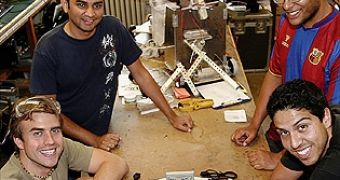The idea of creating a dirt-cheap computer system for Third World students is still bubbling in the minds of many. And it's only natural that this happened, given we're not talking about a $100 computer, but about something that will be priced at only 10% of that. Unbelievable as it may sound, a few MIT students will dedicate many hours of their spare time to trying to put together such a computer device. However, we must also mention that it's not a laptop-like device that they're going for. Read on for more details.
According to the Boston Herald, Derek Lomas, Jess Austin-Breneman and other designers have joined forces in order to achieve what can only be deemed as one pretty interesting goal. That is, to create a computer for Third World residents, which will be priced at an incredible $12. That's less than some of us spend on lunch, just for the sake of argument.
"We see this as a model that could increase economic opportunities for people in developing countries," said Lomas, part of a team involved in the development of the ultra-cheap computer at this month's MIT International Development Design Summit. "If you just know how to type, that can be the difference between earning $1 an hour instead of $1 a day."
Nicholas Negroponte, also a member of MIT, has been working on a $100 laptop for Third World kids since 2005. However, Lomas' initiative is perhaps twice as laudable since it means that he and his team will attempt to build a computer-like device that will be priced at about one-tenths of Negroponte's One Laptop Per Child project.
Apparently, Lomas came up with the idea after a visit to India last summer. In Bangalore, the American graduate student stumbled upon a $12 computer of sorts that used a keyboard and Nintendo-like console to let users run simple games and programs. Lomas and his colleagues will try to improve this device by implementing more recent technologies.
The small-priced systems they are building are based on old Apple II computers, and will presumably provide rudimentary Web access and other functions.
"My generation all had Apple IIs that we learned to type and play games on," the 27-year-old said. "If we can get buy-in from programmers, we can develop these devices and give [Third World] schools Apple II computer labs like the ones I grew up with."

 14 DAY TRIAL //
14 DAY TRIAL //